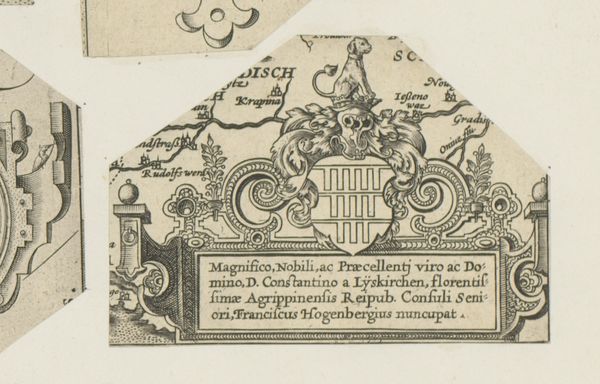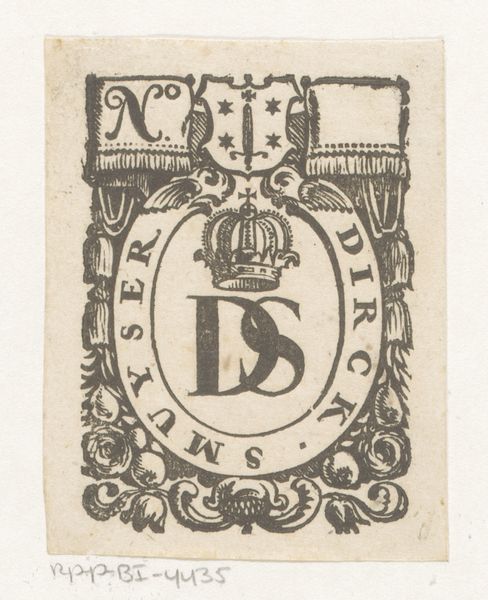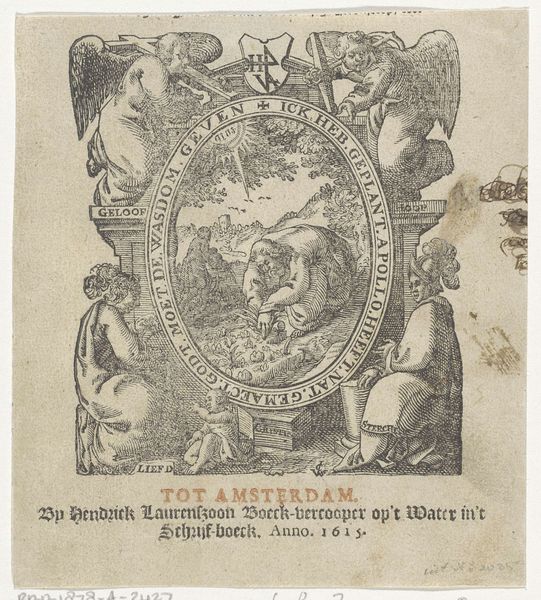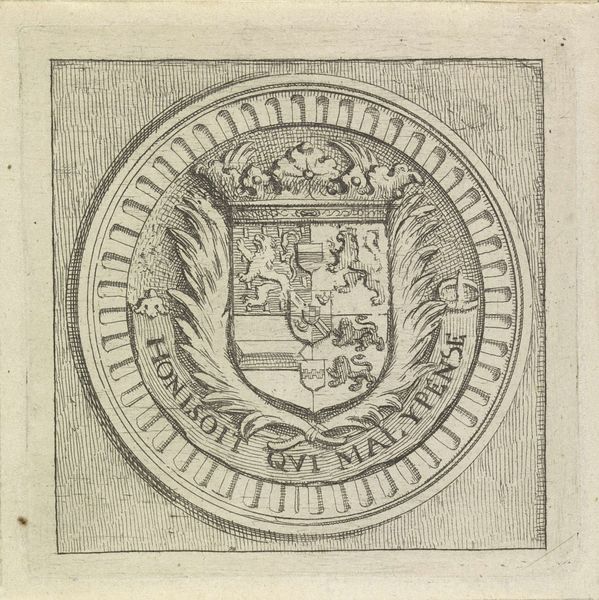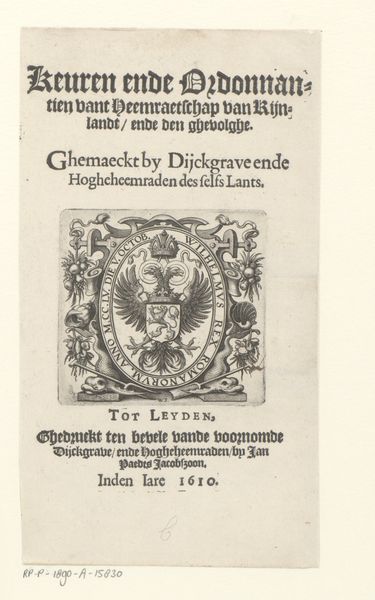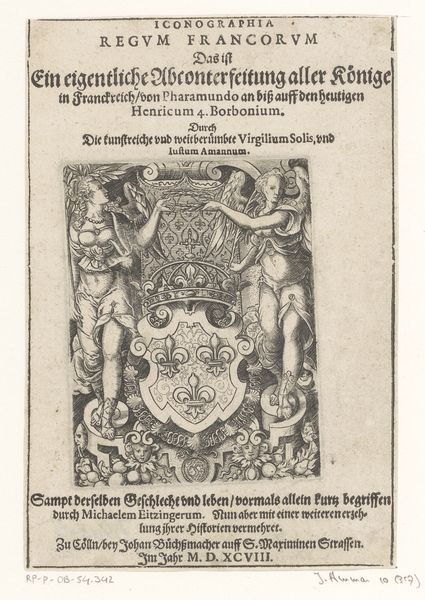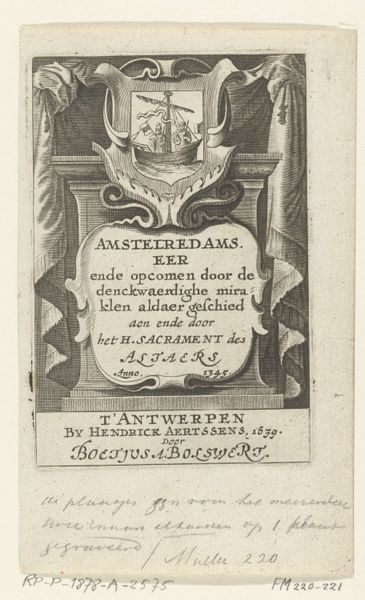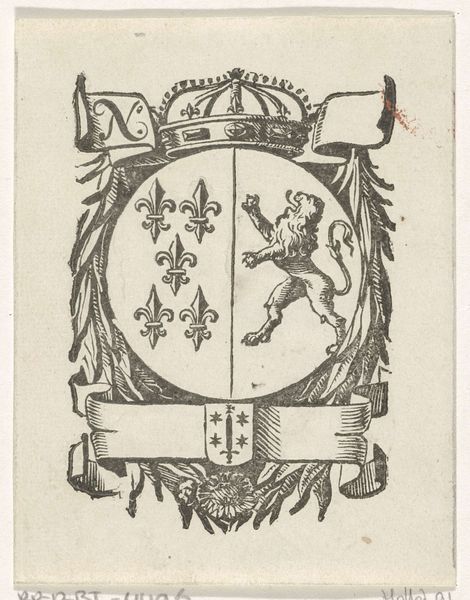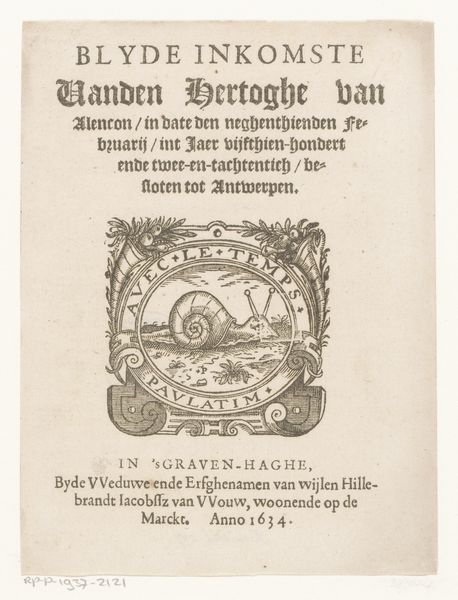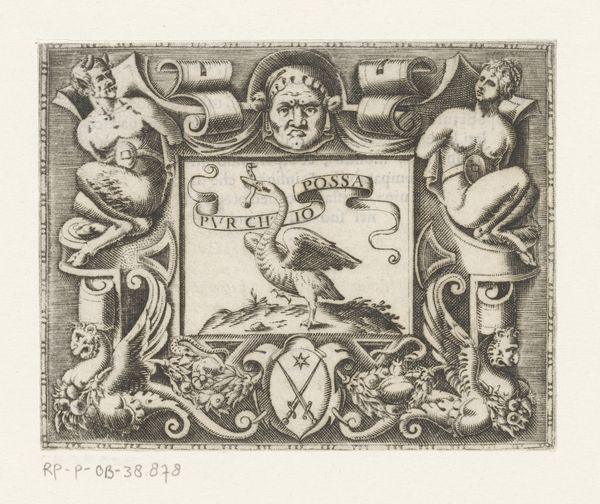
graphic-art, print, engraving
#
graphic-art
#
baroque
# print
#
old engraving style
#
geometric
#
line
#
sketchbook drawing
#
engraving
Dimensions: height 88 mm, width 77 mm
Copyright: Rijks Museum: Open Domain
Curator: This is a 17th-century engraving entitled “Vignet van Jan Gerritse Westendorp te Amsterdam” by an anonymous artist. It's an interesting example of baroque graphic art. What do you think of it? Editor: It feels very self-contained and formal. The black lines are so sharp, they create this strong sense of order. Almost like an official seal. Curator: Exactly! The geometric structure emphasizes a family or guild's prestige, perhaps solidifying Jan Gerritse Westendorp's place in Amsterdam society. The lions, the crown, all very symbolic of power. Editor: And isn’t that fascinating? Visual cues worked overtime in that period to telegraph status and legitimacy, creating a clear visual hierarchy of who belonged and who didn't. It speaks volumes about social stratification. Curator: Yes, the symbolic weight is intense. Even the ornate flourishes aren’t just decorative; they amplify the visual message of established authority, reflecting the enduring power of heraldic emblems. The geometric frame provides that visual container for established society. Editor: You can also see hints of social exclusion in that emphasis on belonging. The imagery celebrates a closed system of privilege while subtly reinforcing who is on the outside. And what about those wheat shafts on the right—a hint to some specific form of labor tied to the lineage? Curator: Intriguing idea! Wheat definitely represents prosperity and abundance, potentially referencing agricultural roots, a common trope. Lineage was everything; it visually anchored individuals within a historical continuum of family success and legacy. It's like an early form of branding! Editor: Perhaps so, but consider the lack of acknowledgment for the laboring masses who made this prosperity possible. This symbol almost seems a declaration of separateness, a refusal to engage with broader socio-economic concerns beyond their inner circle. Curator: It truly offers us a glimpse into how communities were defined and celebrated through visual shorthand. It's almost anthropological. Editor: Agreed. Examining this print offers such a concise entry point for understanding class, power, and representation during that era. Curator: I think that sums up our explorations quite well. The conversation shows us just how much depth lies within this compact composition.
Comments
No comments
Be the first to comment and join the conversation on the ultimate creative platform.
